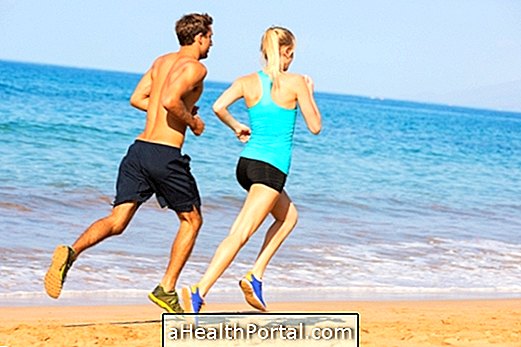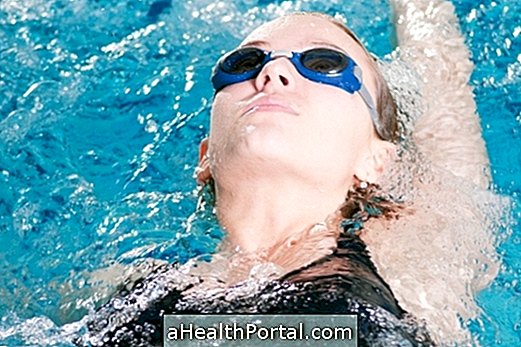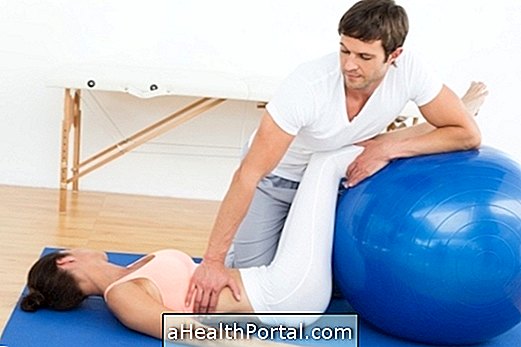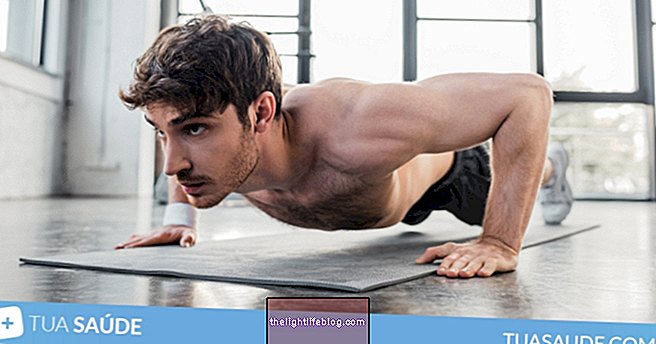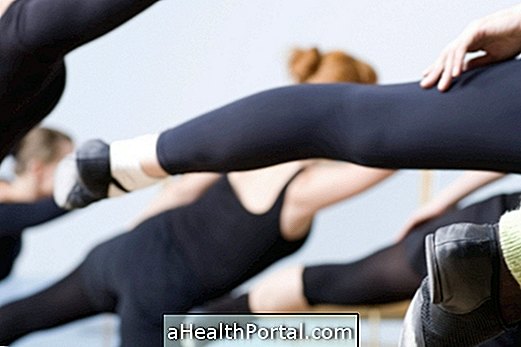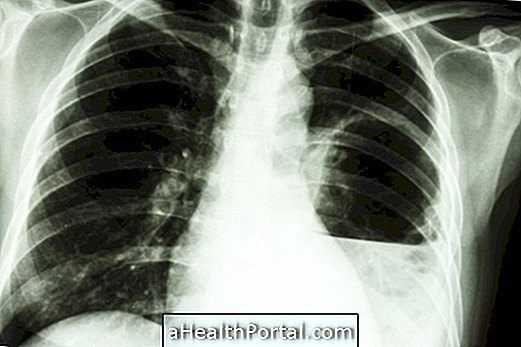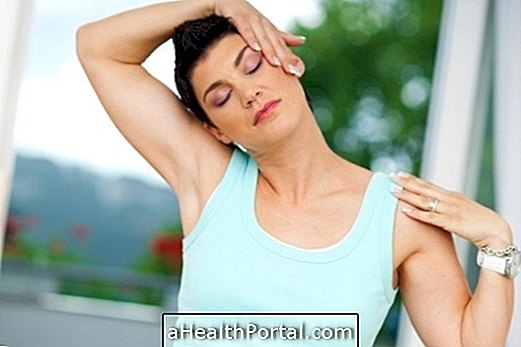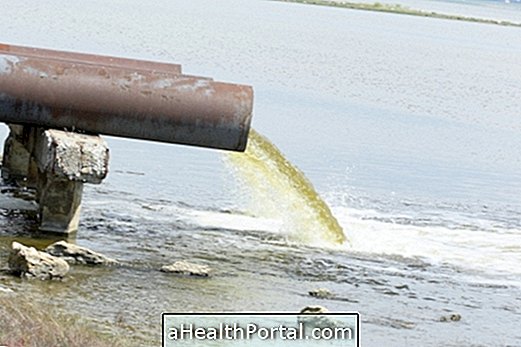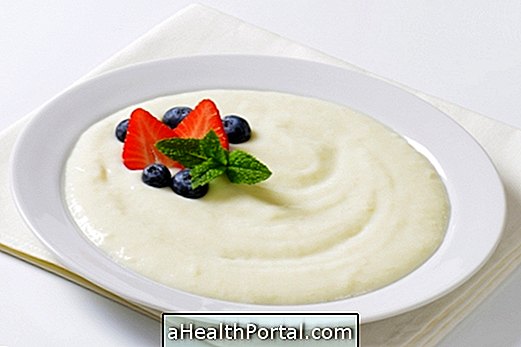Anyone can practice Pilates, but Solo Pilates exercises are ideal for ex-sedentary people who are willing to start some kind of physical activity, but especially for those who are overweight. These exercises are performed on the mattress, more slowly and with less impact on the joints, which in addition to facilitating the activity, prevents pain in the knee, back and ankle, for example.
Pilates exercises most recommended for beginners are Solo, with the aid of elastics and balls of various sizes that do not overload the muscles and joints and respect the capacity and strength of the student. With the improvement of the physical conditioning it is possible to progress the exercises to the more intense ones and with other Pilates equipment, like the Cadilac, for example.
So, the first Pilates exercises for beginners can be:
1. Learn the correct breathing

The correct breathing for the practice of Pilates exercises is the thoracic or diaphragmatic breathing, that is to allow the entrance of air through the nose and the exit of the air through the mouth. The best way to learn breathing is to lie on your back, keeping your back glued to the floor and your legs bent, to allow for a better accommodation of the lumbar spine.
Next, you should rest your hands on the abdomen and inhale deeply, but do not pop the abdomen, allowing the ribs to be further apart, especially laterally. When it is no longer possible to allow air to enter, all air must be exhaled through the mouth in a slow and controlled manner. You should make at least 5 breaths like this.
2. Raise one leg at a time

In the same position, it is due to each inspiration to approach one leg of the trunk and return to the initial position whenever it starts to release the air through the mouth. This exercise should be performed 5 times in a row, with care not to decontaminate the breath. When finalizing the 5 repetitions do the same exercise with the other leg.
3. Center the arms in front of the body

In the same position, lying belly up and with knees bent but placing a ball in the back, and holding pesinhos of 0, 5 or 1kg in each hand, one should extend the arms and touch the hands, one in the other. You should approach your hands as you release the air through your mouth and allow the air to enter when your arms are stretched back to the floor.
4. Hundreds

Lying belly up, bend your legs as in the picture and lift the torso off the floor, keeping your arms stretched along the body. The exercise consists of keeping the abdomen contracted while moving the arms up and down (always stretched) for 10 times in a row. Repeat 9 more times, completing 100 moves, but divided ten times.
5. Elevation of leg

Lie on your back, place a ball between your legs, close to your ankle, and lift your legs together, as shown in the picture, then lower your leg and then turn your leg up. The leg should not be raised to the point where the lumbar spine is dislodged from the floor. During this exercise, the spine should always be completely on the floor.
Check out other Pilates exercises with Ball that are also suitable for beginners.
The instructor may indicate that other exercises are performed to improve the quality of life and contribute to weight loss. Pilates classes can be held 2 or 3 times a week, either alone or in a group, but always with the guidance of a Pilates instructor who can be a physical education professional or a physiotherapist, because in case of overweight Pilates should not be done at home, to avoid the risk of injury.
How to Make the Most of Lessons
To take full advantage of Pilates classes it is advised to do the exercises properly because so the results of tonicity, balance and muscular strength are seen more quickly. Another useful tip is to focus on breathing taking care not to hold your breath while performing the exercises, keeping the flow in and out of the air, respecting the instructor's directions.
Key Benefits of Pilates
Although not an activity that has a high caloric expenditure, Pilates also helps to lose weight and mobilize body fat, also improving physical fitness, promoting well-being and increasing self-esteem.
The benefits of Pilates can be seen in the first few weeks of exercise and it is easier to breathe, stay and stay upright with less pain, better blood circulation in the legs and more exercise.
In addition to these benefits, Pilates helps improve posture by correcting the position of the head that is usually more forward-facing and also the 'hump', which is typical when you are overweight. These exercises help strengthen the muscles, increase the flexibility of the body and decrease the amount of fat inside the arteries, naturally lowering cholesterol.
